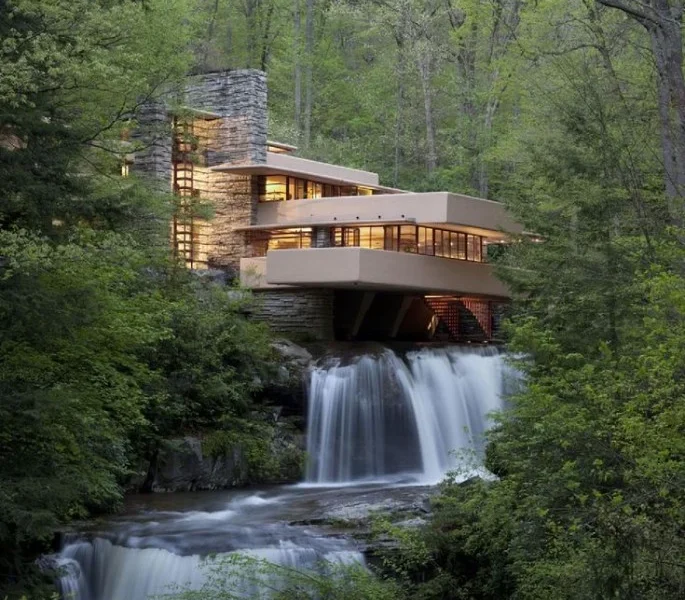Introduction:
Frank Lloyd Wright, a visionary architect of the 20th century, redefined the relationship between built structures and their natural surroundings through his pioneering concept of organic architecture. This essay aims to explore the fundamental principles that shaped Wright’s approach to organic architecture, illuminating his innovative design philosophy and its enduring impact on the world of architecture.
1: Harmony with Nature:
Frank Lloyd Wright’s organic architecture was rooted in the principle of harmonizing built environments with the natural world. Unlike the stark contrast often found in conventional architecture, Wright’s designs sought to seamlessly integrate structures into their surroundings, creating a sense of unity and continuity. By embracing the inherent beauty of nature, Wright’s buildings appeared as though they emerged organically from the landscape, blurring the boundaries between the built and the natural environment.
2: Form Follows Function:
Central to Wright’s organic architecture was the principle of “form follows function,” a concept that prioritized the practical needs and functions of a building over purely aesthetic considerations. Wright believed that architecture should serve its occupants in a functional and efficient manner while also embodying a sense of beauty and harmony. This approach led to designs characterized by fluid spatial arrangements, open floor plans, and purposeful integration of elements, resulting in spaces that were both visually striking and highly functional.
3: Unity of Design:
In Wright’s organic architecture, every aspect of a building was carefully considered and integrated into a cohesive whole. From the overall form down to the smallest detail, such as furnishings and decorative elements, each component contributed to the overall unity of the design. Wright believed in creating holistic environments where every element worked together harmoniously to enhance the human experience. This approach fostered a sense of coherence and continuity throughout his buildings, reinforcing the idea of architecture as an organic, integrated system.
4: Respect for Materials and Craftsmanship:
Another key principle of Wright’s organic architecture was a deep respect for materials and craftsmanship. Wright favored natural materials such as wood, stone, and glass, which he believed possessed inherent beauty and integrity. He emphasized the use of locally sourced materials, rooted in the cultural and environmental context of the site, which helped to further integrate his buildings into their surroundings. Additionally, Wright placed a high value on craftsmanship, advocating for the meticulous handcrafting of every detail to ensure quality and authenticity in his designs.
5: Adaptability and Flexibility:
Wright’s organic architecture was characterized by a sense of adaptability and flexibility, allowing his buildings to respond dynamically to changing needs and conditions. Wright’s designs often featured modular elements and flexible spaces that could be easily adapted or expanded over time. This approach reflected Wright’s belief in architecture as a living, evolving entity that should be responsive to the needs of its occupants and the environment.
6: Sustainable Design Practices:
Long before the term “sustainability” became a mainstream concern, Wright was incorporating eco-friendly principles into his designs. His organic architecture embraced sustainable practices such as passive solar design, natural ventilation, and site-sensitive planning, which helped to minimize environmental impact and maximize energy efficiency. By prioritizing harmony with nature and respect for the environment, Wright’s designs anticipated many of the principles of modern sustainable architecture.
Conclusion:
Frank Lloyd Wright’s organic architecture represents a profound departure from traditional approaches to design, emphasizing harmony, unity, and integration with the natural world. Through his innovative principles of design, Wright created buildings that not only served their functional purpose but also inspired a deeper connection between people and their environment. Today, Wright’s legacy continues to influence architects and designers around the world, reminding us of the enduring relevance of organic architecture in creating spaces that are both beautiful and sustainable.




